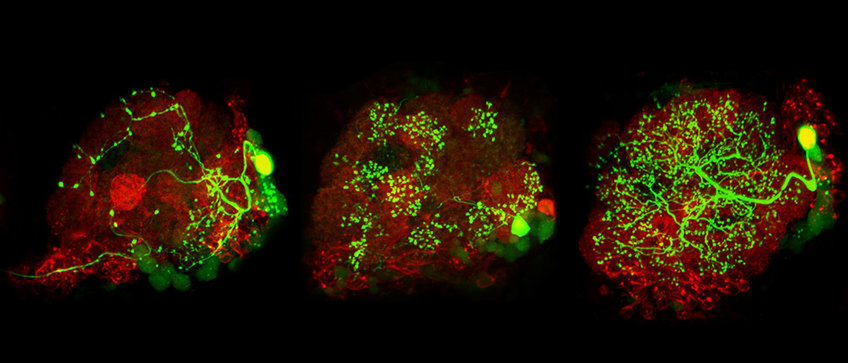
Research Group Olfactory Coding
Our group studies the olfactory circuitry and the underlying neuronal mechanisms that are involved in the coding, processing and perception of odors in insects.

Animals use sensory systems to navigate the environment in a way that optimizes their survival and reproduction. The olfactory system plays here a key role in encoding chemical information and translating the outside world into a neuronal representation in the brain to enable an organism to thrive in its respective surroundings. Our main goal is to understand how neural circuits organize olfactory inputs to control behavior in insects using Drosophila melanogaster as a model organism. The vinegar fly represents a premier system for studying olfactory processing as it exhibits a stereotyped architecture, which is similar to its mammalian counterpart, but is less complex and highly tractable as well as susceptible to genetic manipulations. We are combining neurogenetic tools with advanced techniques, such as in vivo two-photon microscopy, anatomical tracing, neuronal reconstructions, optogenetics, as well as a variety of behavioral assays. We collaborate with bioinformaticians for imaging data analysis and computational modeling. To allow for inter-individual comparisons of functional imaging data, we generated the first in vivo 3D atlas of the fly antennal lobe (for details see here).

Besides studying odor coding in the fly brain, we are currently investigating whether olfactory circuits are plastic and modulated by the internal state of the animal, previous experience and associative learning. We are also studying the olfactory code in non-model organisms such as sister species of D. melanogaster exploiting different ecological niches as well as the desert locust. Furthermore, we are interested in multimodal sensory processing and integration.

